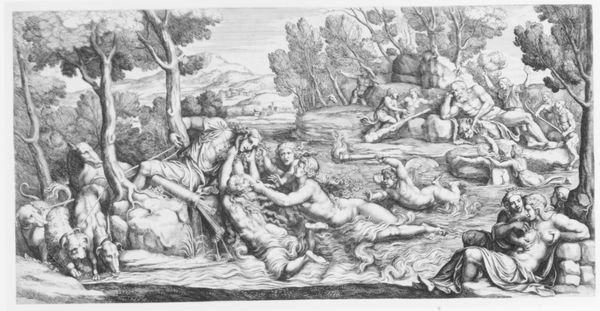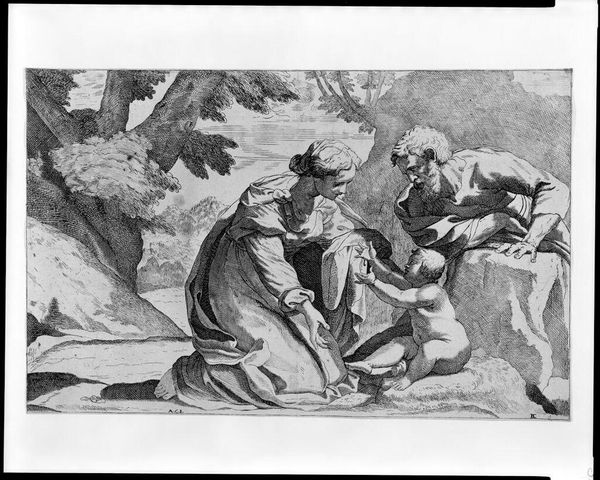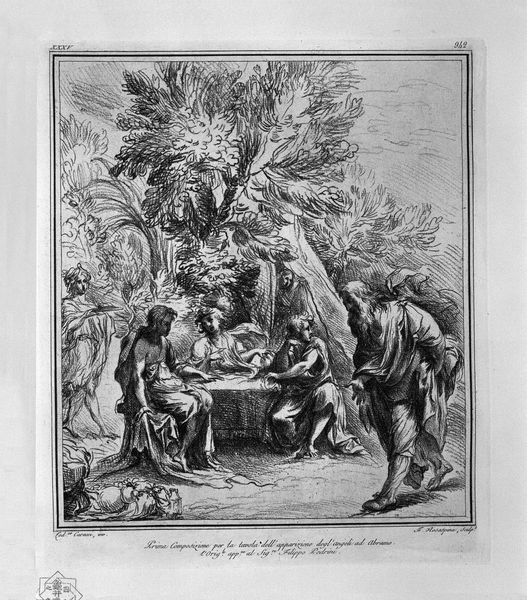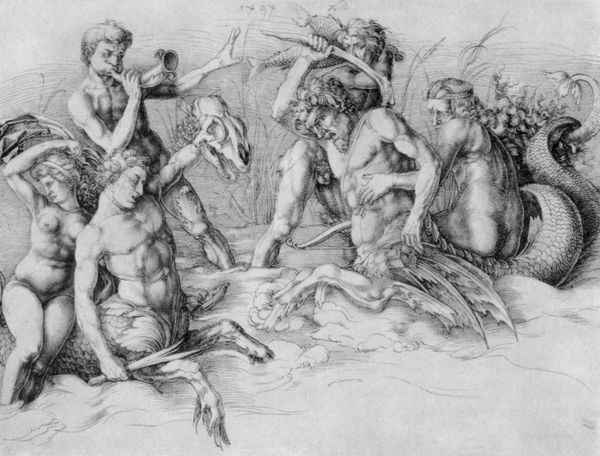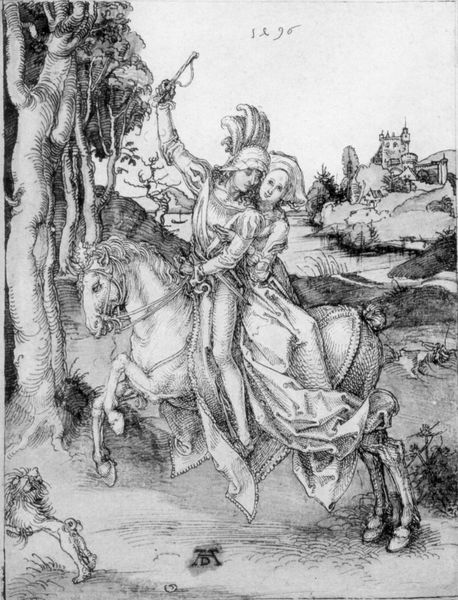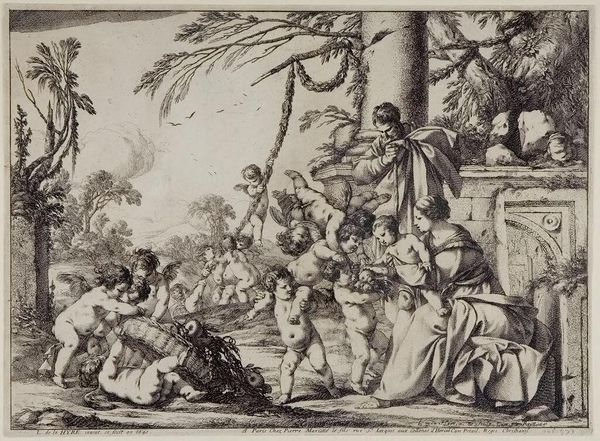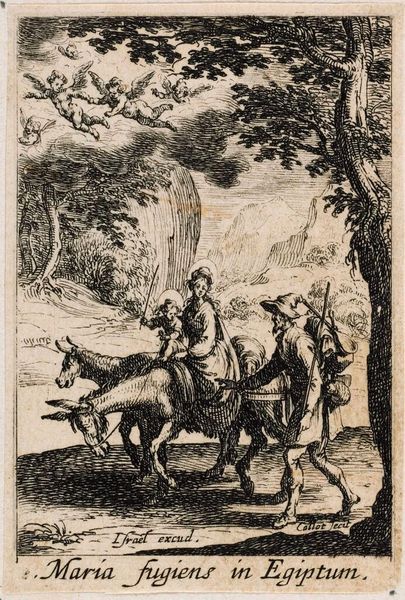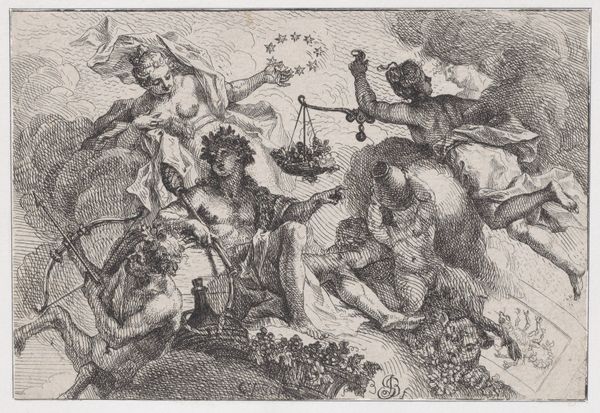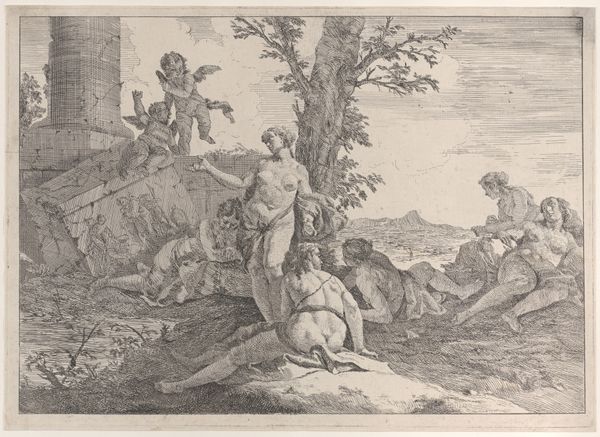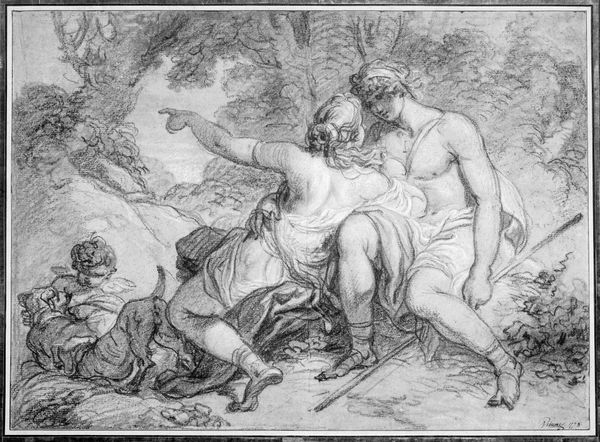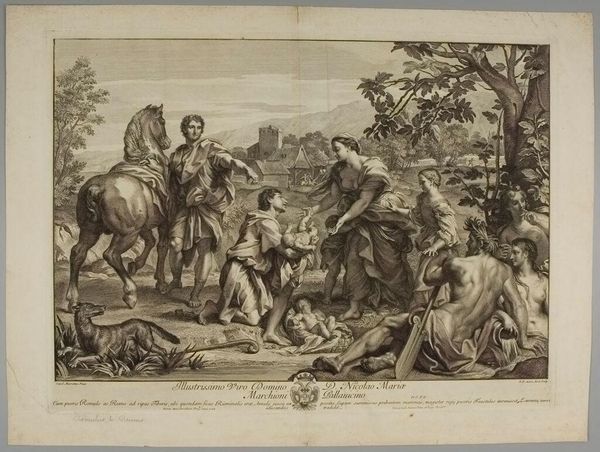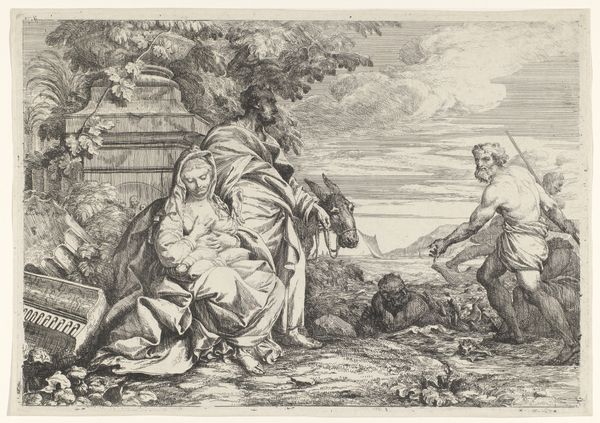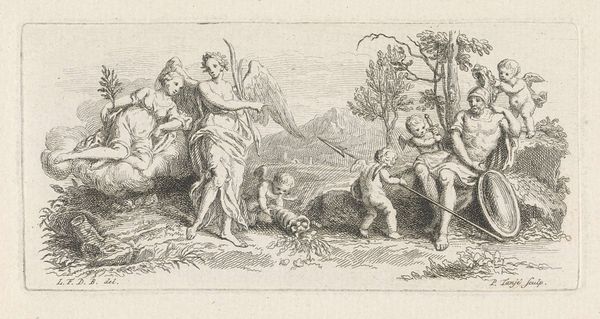
Varii Capricci, e Paesi inventati, e disegnati dal celebre Gio. Benedetto Castiglione ... tratti dal raccolta Zanettiana 1786
0:00
0:00
Copyright: Public Domain
This etching by Gaetano Gherardo Zompini, derived from the Zanettiana collection, presents a pastoral scene populated by mythological beings. Here, we observe a satyr teaching music to a centaur while another slumbers, draped languidly over a classical monument. The satyr, with his goat-like features, represents untamed nature and primal instincts, a figure familiar from ancient Greek art and literature. His connection to music and revelry links him to Dionysian rituals, celebrations of ecstasy and liberation. The centaur, a hybrid creature, embodies the duality of man and beast, a motif that has persisted through the ages, symbolizing the struggle between reason and instinct. Consider how these beings also appear in earlier works, such as classical sculptures and Renaissance paintings, each time carrying a slightly altered cultural meaning. The recurring image of the centaur touches upon our collective memory, stirring subconscious associations with freedom and conflict. This image invites us to contemplate the complex interplay between our rational and irrational selves, a theme that resonates across epochs. The motif of the wild, untamed being, as seen here, undergoes continuous transformation, reappearing in various guises throughout history.
Comments
No comments
Be the first to comment and join the conversation on the ultimate creative platform.

